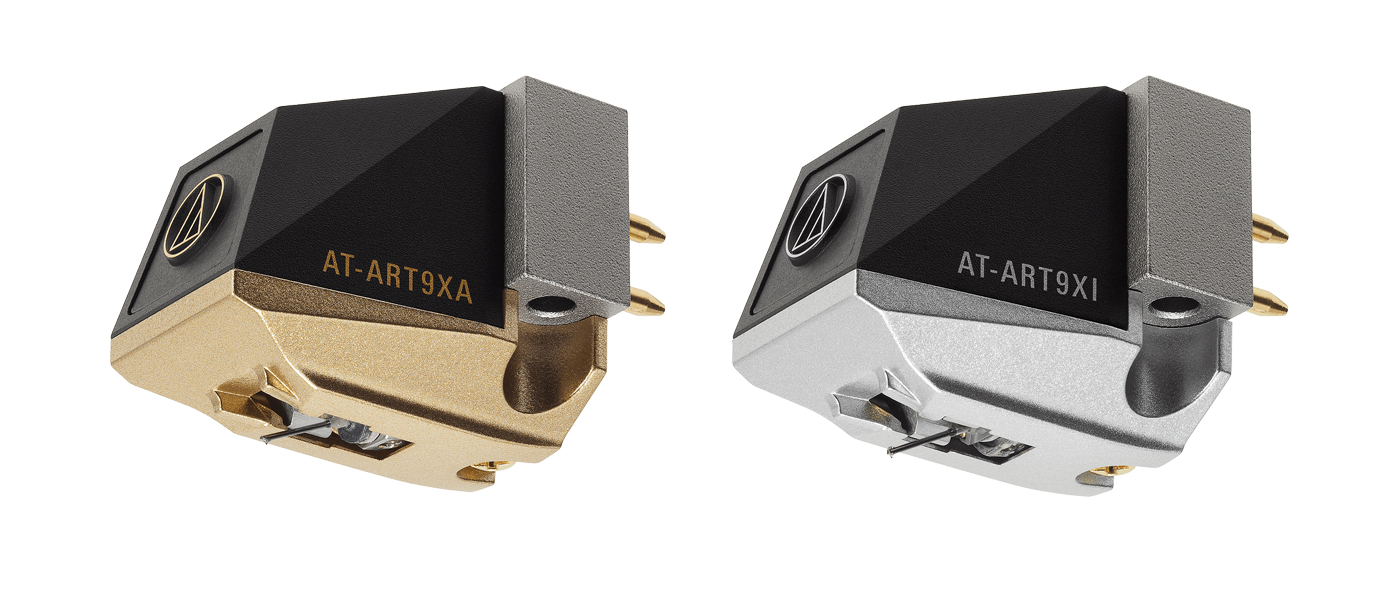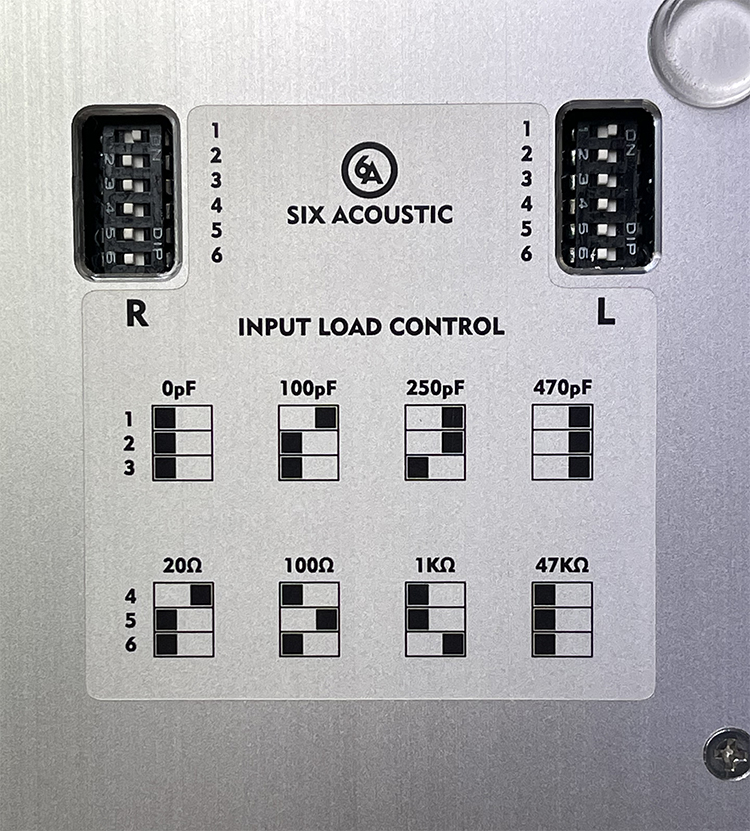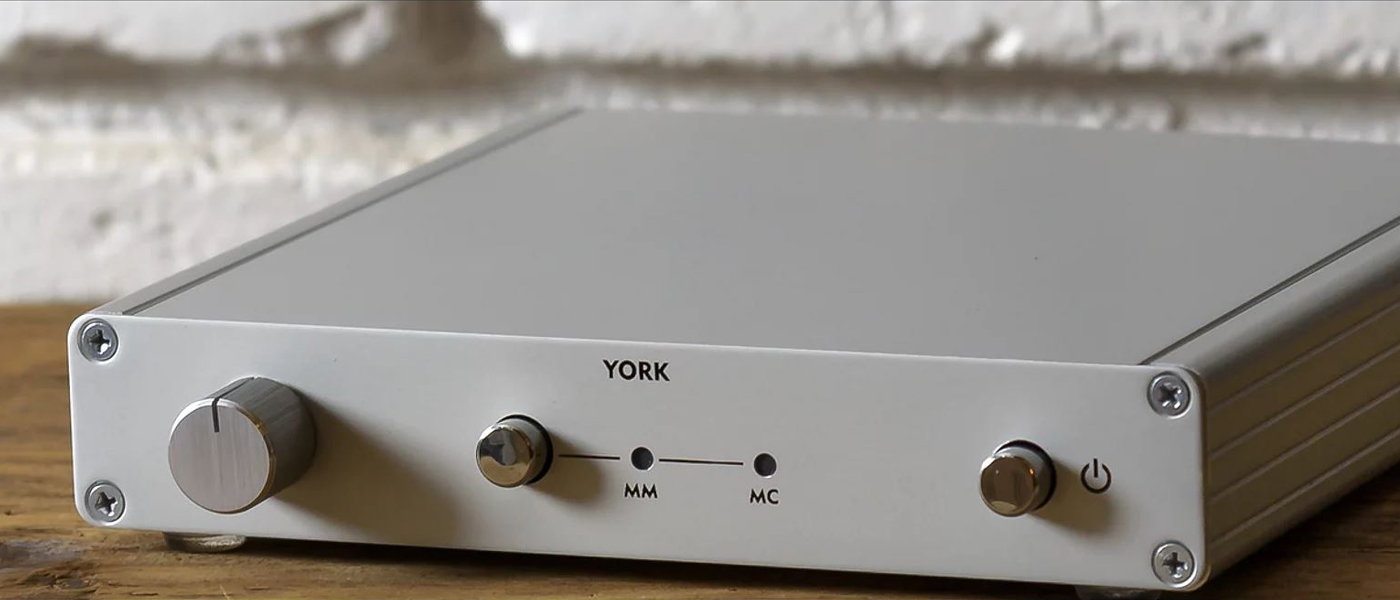
Started via a Kickstarter campaign and delayed due to COVID, the Six Acoustic York Phono Preamp is in production and available to purchase. At $499.00 CDN (about $390.00 USD) it provides a good deal of user adjustability to suit a wide variety of cartridges.
Six Acoustic York Phono Preamp
- High-quality internal components.
- Provides both capacitance and impedance settings via underside DIP switches.
- Unique Gain Trim knob allows for fine-tuning cartridge gain.
- Small footprint.
- Great sound and flexibility for the price.
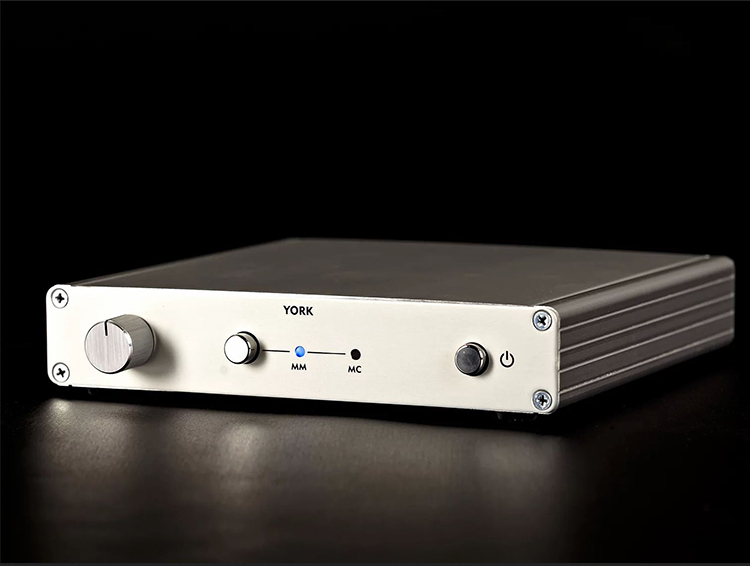
Six Acoustic is a small audio concern out of Ajax, Ontario Canada (just east of Toronto). The owner Steve Meszlenyi, who helped start the company with his father in 1986, has a physics background and a love for audio. The company originally worked more in industrial audio applications but made a recent shift to serve the consumer Hi-Fi market. While the company is currently developing a Class D stereo power amplifier, the York Phono Preamplifier is their first fully formed Hi-Fi product. Six Acoustic embarked on a Kickstarter campaign for the York in early 2020 and, after a short delay due to COVID-19, the York is now available for purchase. When I spoke with Steve to get a little background information on the York, he made it clear that the company designed the York phono preamp to be a high-value component whose performance punches well above its price class. Let’s see if they made good on their intentions.
Design:
Solid State MM/MC phono preamplifier.
Gain:
MM – 40 dB, MC – 60 dB
Gain Trim:
+12 dB/ -4 dB
THD+N:
0.001% (Manufacturer)
Equalization:
RIAA
Frequency Response:
20 Hz – 20 kHz (+/- 0.01 dB)
Input Impedance Settings:
17, 20, 91, 100, 1K, 47K (Ohms)
Input Capacitance:
0, 100, 150, 220, 250, 320, 370, 470 (pF)
SNR:
@40 dB > 100 dB, @60 dB > 80 dB
Inputs:
1 pair RCA, 1 Grounding Lug
Outputs:
1 pair RCA
Dimensions (H x W x D):
1.2” x 6.5” x 7.2”
Weight:
1.3 lbs.
Warranty:
2 Years
MSRP:
$499.00 CDN (about $390.00 USD at current exchange rates)
Website:
Company Directory:
SECRETS Tags:
phono, preamp, riaa, york, six acoustic, vinyl reviews, turntable accessories, review 2021
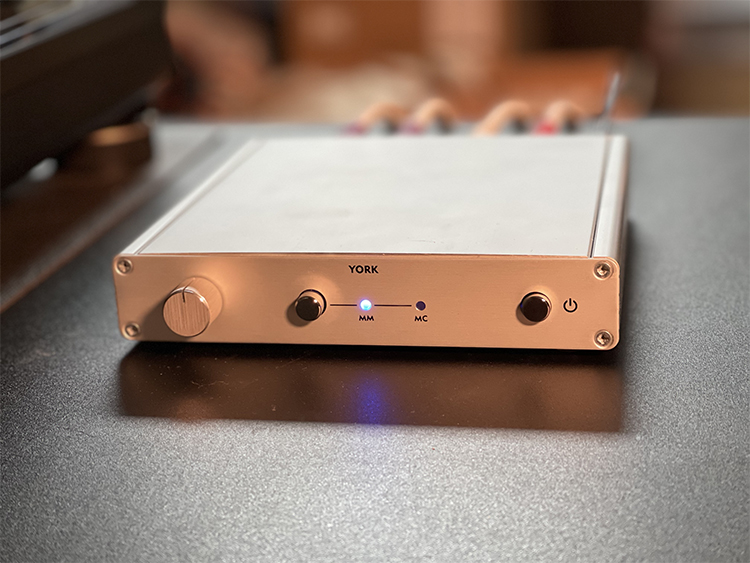
The Six Acoustic York phono preamp is a modestly sized, aluminum cased component that, according to the manufacturer, is designed to perform on par with moderately more expensive MM/MC phono preamps. The exterior consists of simple, straightforward aluminum casework. Internally it uses high precision audio op-amps, 1% capacitors, and 0.1% resistors and allows for both impedance and capacitance loading via underside DIP switches. You can even select 0 internal capacitance so only the inherent cable value is seen between the cartridge and the preamp.
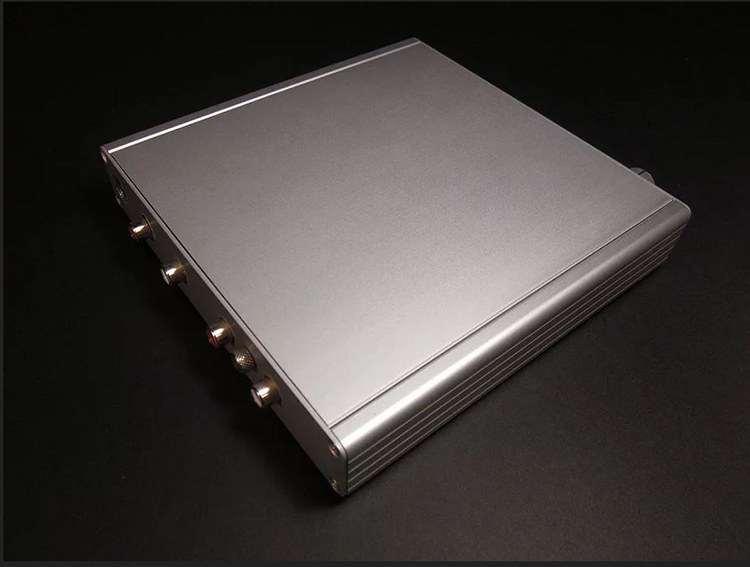
A plastic stylus is also provided to help set the switches and preserve your fingernails. On this compact unit’s silver faceplate there is the expected power button and MM/MC selector switch but what is unusual is a dial for fine-tuning the cartridge gain from +12 dB to -4 dB. I’ve never seen a feature like this on a phono preamp but in use, it makes total sense. Oftentimes the fixed gain values of a phono preamp can either add too much or not enough volume for your audio setup and unless your preamp has input level trim adjustments, you’re kind of stuck. The York provides a simple and elegant way, via a high-quality potentiometer, for granular gain adjustments.

The rear panel has a pair of RCA inputs and outputs and a standard grounding post for your turntable’s grounding wire. One little gripe I have is that the grounding screw is a bit fiddly and hard to grasp. Personally, I would prefer a small, raised area off the base for the screw to tighten the wire against, but this is a minor annoyance.
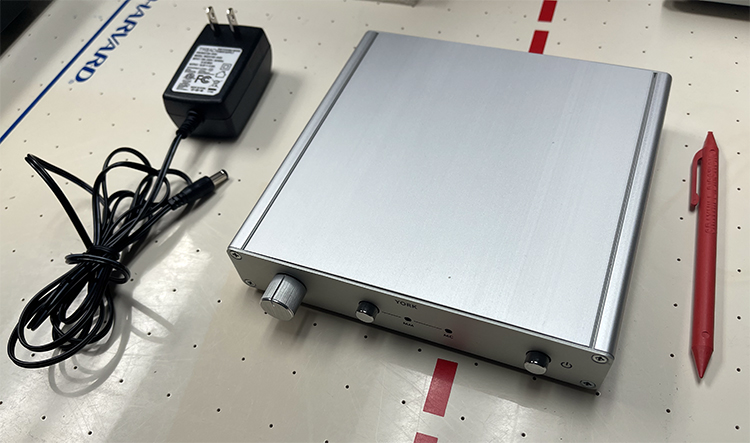
The York uses a switching (wall-wart) power supply that outputs 18 Volts. The warranty is for 2 years and the unit is manufactured in Canada.
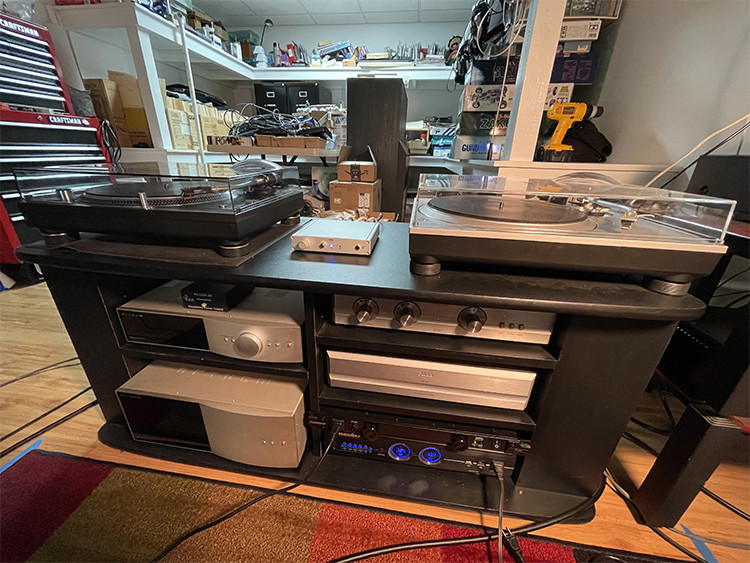
During the review, the Six Acoustic York phono preamp was used with my KAB modified Technics SL1200 MK 6, a Technics SL1500C along with various Audio-Technica MM and MC cartridges, various Ortofon MM cartridges, and a Shure M97xe with a JICO SAS stylus. The rest of my audio chain consisted of the Benchmark Media HPA4 preamplifier, AHB2 power amplifier, and Revel F228Be loudspeakers.
Overall, the Six Acoustic York Phono preamp is a very capable little box. I liked the inherent flexibility of the unit to adapt itself to a wide variety of turntable and cartridge pairings. Whether I was using, Shure, Ortofon, or Audio-Technica cartridges, be they moving magnet or moving coil, in either mono or stereo, the York’s clean and engaging sound was very agreeable to my ears. I actually wished that I had a few more oddball or less mainstream cartridges around to use with the York. As it was, I had plenty of adjustments to experiment with and the gain trim knob proved really handy to make judicious gain tweaks to balance certain cartridges to my preamp’s volume range.
Secrets Sponsor
As I mentioned, the York’s sound character was very clean with no hum or noticeable noise floor in normal operation. It is perhaps a little forward in presentation with vocals but not objectionably so. It is most certainly a step up from the Emotiva XPS-1 which sounds a little more etched, with higher intensity music and low-frequency material. The York exhibited no such issues and seemed to have just enough headroom to avoid premature clipping on big grooves. During bench testing, I got the York’s output to clip at about 5.5 Volts and while in regular listening I didn’t encounter any audible distortion, I would like to see a little more headroom in there for extra safety. This would necessitate using a larger switching power supply in the York’s case. The other comparable phono preamp that I have is my trusty old Rotel RQ-970BX. Now before some of you sneer at a 20-plus-year-old piece of equipment being used as a suitable touchstone, the Rotel is an intelligently designed, textbook phono preamp that performs as new, sounds great, and whose measurements shame a lot of newer phono stages in the $500.00 price class and above. Its robust linear power supply also allows for a clipping margin well above 7.5 Volts. With moving magnet cartridges, the York’s sound quality was very much equal to my Rotel, open, clear, and noise-free. I was able to good sonic sense of whatever cartridge that I had on at the time. Moving coil carts sounded just as good through the York although I did feel the Rotel’s sound had just a little more body and definition with my OC9ML/II reference cartridge on the tonearm. Although I will say the York’s adjustable gain control was most beneficial when my colleague Tyler Stripko sent me an Audio-Technica ART9XA MC cartridge to bench test. It puts out a tiny 0.2mV and the York let me dial in just a little more gain than what the Rotel could muster.
A few of the more memorable musical selections that I experienced with the Six Acoustic York:
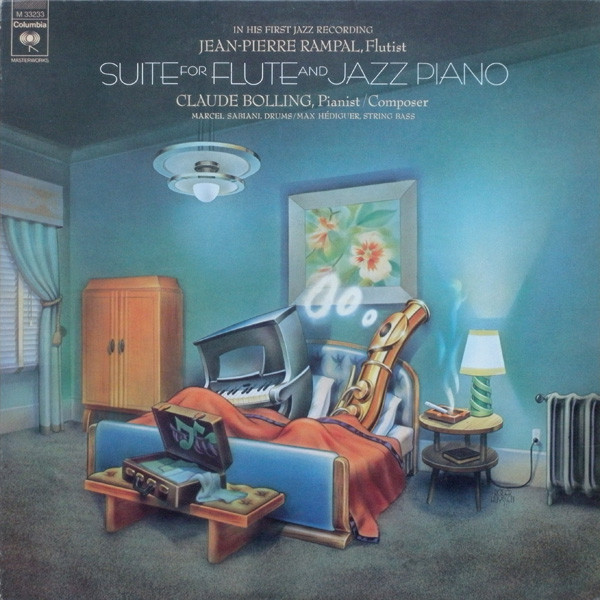
Claude Bolling/Jean-Pierre Rampal, Suite for flute and jazz piano, Columbia, 1975
Using the Technics SL1500C with an AT VM540ML, “Baroque in Blue” had a lovely, large presence that extended beyond my speakers. The intensity and pitch of Rampal’s flute playing showed no signs of upsetting or overloading the York’s processing capabilities. The tonality remained sweet and composed even at its most intense level of play. Rampal’s piano work was also nicely handled with a fine and clear ring to each note and solid weight to the lower register notes.
In “Sentimentale” the string bass sounded particularly good with solid depth and correct pitch along with plenty of string detail in each pluck. The drum cymbals had a nice sheen to their sound, not as all-revealing as digital, but agreeably good. This is a record with an especially quiet background in terms of noise, and even when the volume was loud, I did not get any sense of any sort of elevated noise floor.
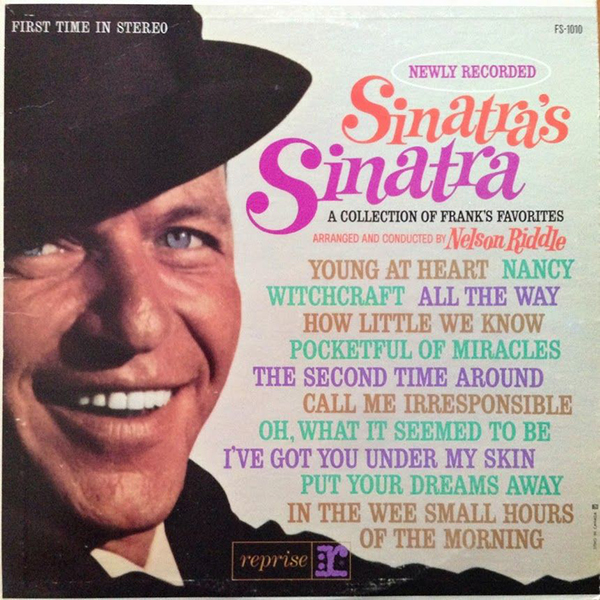
Frank Sinatra, Sinatra’s Sinatra, Reprise, 1963
While using the SL1500C turntable with the Ortofon 2M Black MM cartridge listening to “I’ve got you under my skin” has especially nice stereo separation. Frank’s voice is clear and perfectly balanced in the center of the soundstage. The little details of the background percussion are perfectly delivered against a background of low noise.
“In the Wee Small hours of the morning” has Sinatra’s voice in a slower deeper croon that the York Phono Preamp clearly defines and nicely renders with the extra weight and deeper tone of his delivery. The background strings have a lovely and clear sheen to them. Overall, the York seems to perform a nice balancing act on this material between a notable sense of clarity, making me feel like I am hearing everything in the grooves, and enough smoothness that I don’t get that any wince-inducing moments that lots of clarity can bring with vinyl.

Kiri Te Kanawa, Ave Maria, Philips, 1984
Using the SL1200 MK 6 with an Audio-Technica OC9ML/II MC cartridge. “Laudate Dominum” displays Dame Te Kanawa’s refined yet potent soprano with authority. The tone and texture of her voice are clear and commanding, accompanied by the Choir of St. Paul’s Cathedral in the background. As the dynamics of her singing can change on a dime there is nothing between the connection of the cartridge, turntable, and the York that seems to have issues with the changing intensity of her singing.
Her voice was perfectly placed in the dead center of the image. Everything sounds spacious and balanced with plenty of clarity to make out the lyrics and choral subtleties yet without sounding fatiguing as opera music sometimes can.
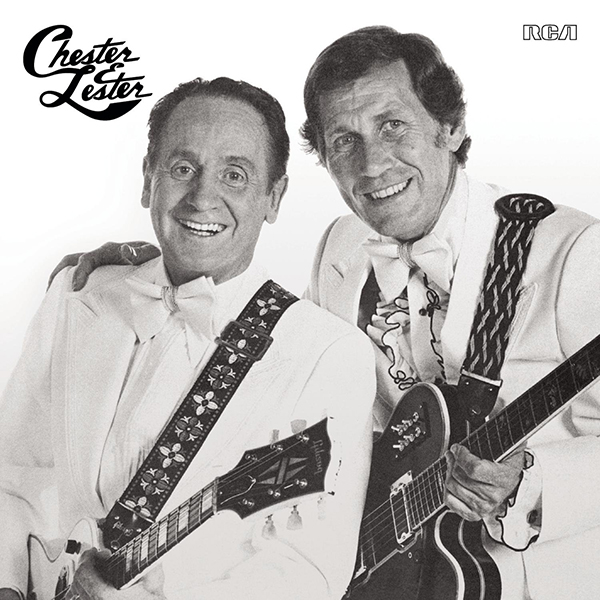
Chet Atkins & Les Paul, Chester & Lester, Exhibit Records, 1976 (2012 LP Pressing)
Using my SL1200 MK 6 and the AT OC9ML/II MC cartridge, these two guitar giants played some of the most liquid and fluid guitar melodies that I’ve ever heard. The Six Acoustic York phono preamp seemed to be an especially good pairing with my turntable and cartridge when listening to “Caravan”. The two distinctive guitar parts, with the masterful picking, bending, and harmonics were crisp and clean sounding.
This is a particularly warm and full-sounding recording that balanced well with the fairly straightforward presentation of the York preamp. “Avalon” is an absolute guitar-playing masterpiece. I could clearly make out the comedic banter between Paul and Atkins where it is muddier sounding in my old CD copy of this album. Both the standard tempo first half of this track and the uptempo second half had great imaging and detail in both men’s playing along with a full-sounding bassline keeping up and keeping time. The York kept everything sounding clean and clear over a noticeably quiet background. No sense of etch or indication of the signal overwhelming the preamp at any point.
Bench Tests by Carlo Lo Raso, Analysis by David A. Rich, and Carlo Lo Raso.
RIAA tracking tests and distortion tests were conducted using custom test tones generated by REW (Room EQ Wizard) software and measured by a Lynx 2B professional computer sound card. Results were analyzed using SpectraPlus audio measurement software. SNR measurements were conducted using a QuantAsylum QA401 analyzer and its accompanying software.
![]()
Above are the RIAA tracking results for the Six Acoustic York Phono Preamplifier. Results show that the individual left and right channels follow the RIAA equalization target closely with only minor deviations at the lowest and highest end of the range.

Here are the THD results at 1 kHz for an output of 600mVrms. The York has a tad more gain at 1kHz than the typical 40dB which is why the output is 600mVRMS. This is of no significance. The exact gain is 41.6dB. The distortion is a very small 0.0006% but this is not distortion just noise. The only spur is a power line harmonic at 180Hz. The noise profile is not flat but reflects the inverse RIAA curve the preamp is implementing.
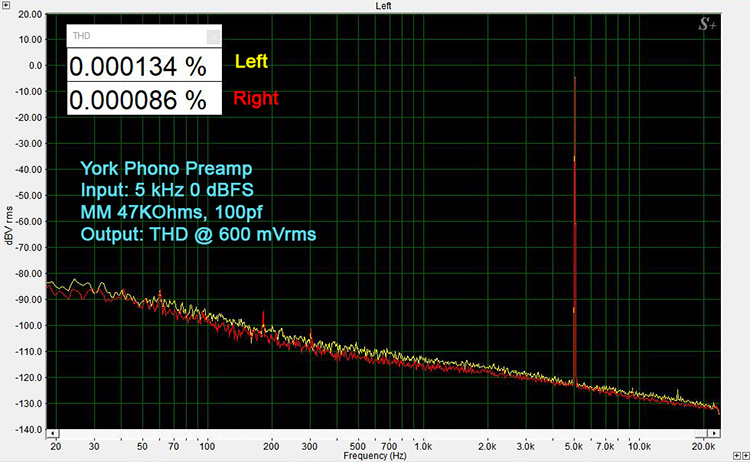
Here are the THD results at 5kHz for an output of 600mVRMS. The THD is 0.00013%. Again, not a harmonic to be seen. The THD is lower because 5kHz has only 3 FFT bins at harmonics 10kHz, 15kHz, and 20kHz.

These are the THD results at 20Hz for an output of 4VRMS. Moving up to 4VRMS the distortion is 0.0035%. THD goes up in a phono stage at low frequencies, if only one stage is providing all the gain. The gain required at 20Hz is a factor of 10 higher than at 1kHz which is 1000 (60dB). That is a lot of closed-loop gain to ask from one opamp. The low THD tells us this phono stage has divided the RIAA EQ between at least two opamp stages. No schematic was supplied by York, so I am just guessing here.
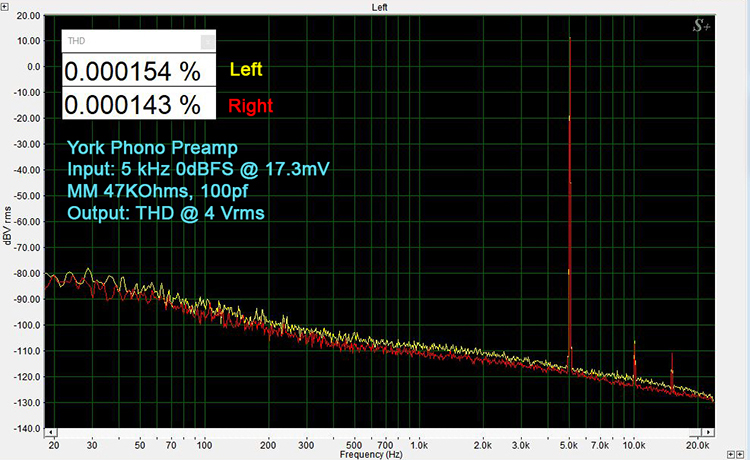
THD Results at 5kHz for an output of 4VRMS. Bringing the input level to 17.3mVRMS at 5kHz yields 4VRMS out. The THD is still nice and low at 0.00015%. This is the only graph you are going to see with real harmonics, but they are small. 10kHz is down 115dB.
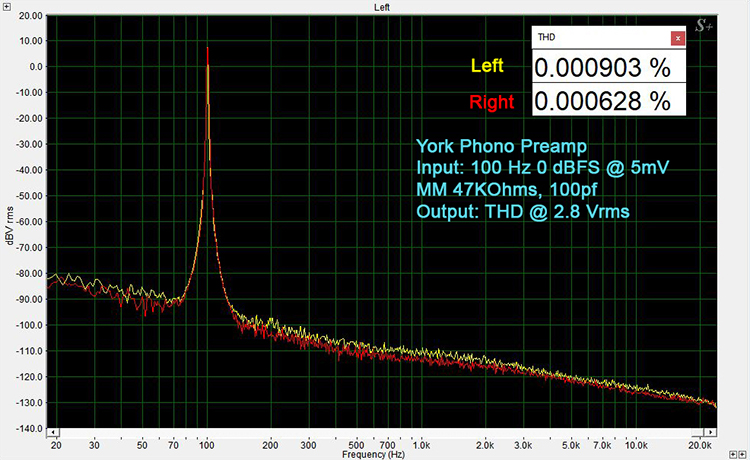
THD Results at 100Hz with an input of 5mVRMS. Since this is a website, not a print publication we can have as many graphs as we want. What we did is hold the input to 5mVRMS, which is the standard value at 1kHz, for which we got 600mVRMS out from 30Hz to 20kHz. At 100Hz the output has increased to 2.8VRMS. The output has gone up 4.7 times the output at 1kHz. No harmonics can be seen in this spectrum.
The output voltage went up for a constant input voltage as a result of the preamp’s RIAA characteristic. Phono cartridges are magnetic devices. The output is proportional to groove velocity (think DC electric generators – the faster you turn the generator, the more voltage you get out, provided it is not loaded).
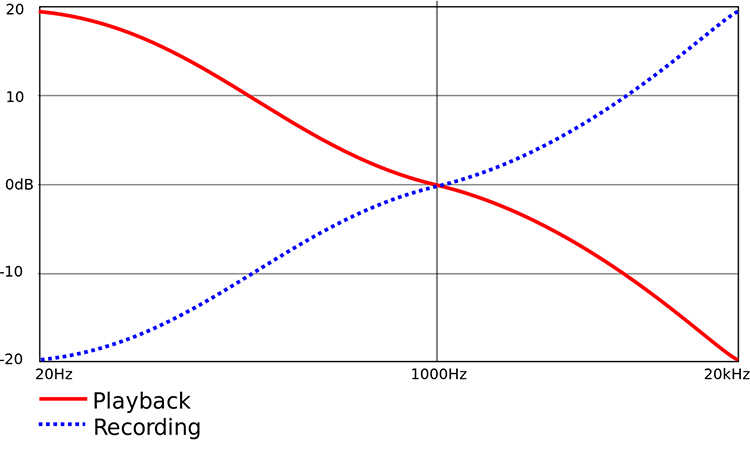
The RIAA curve is needed to keep the groove size from varying dramatically with frequency. At low frequencies, the groove velocity is low. A 5mVRMS output from a cartridge at 100Hz represents a large groove compared to 1kHz. The RIAA does not represent a 10 to 1 voltage decrease in cartridge output from 100Hz to 1kHz if it were keeping the groove size constant. The reason for this is, if we did that from 20Hz to 20kHz we would need a voltage gain change of 10000 to 1. A 60dB change. That is 80dB of closed-loop gain at 20Hz. The RIAA is modified so the gain change from 20Hz to 20KHz is 1000 to 1 (40dB). The curve gets almost flat below 50Hz and flattens around 500Hz. At 2000Hz the curve moves back to the 10 to 1 gain change ratio.
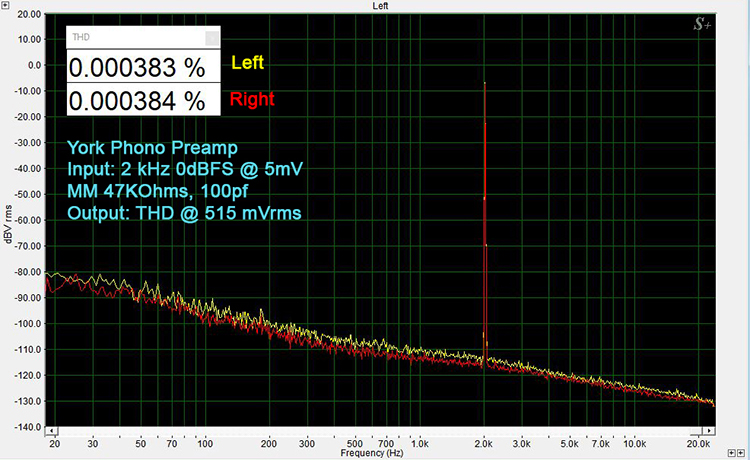
Here are the THD results at 2kHz with an input of 5mVRMS. We are still holding the input at 5mVRMS, but the output has dropped to 515mVRMS as a result of the RIAA curve. The RIAA does not make much of a change in signal level between 1kHz (600mVRMS) and 2kHz. Once again, we have no harmonic spurs in the spectrum.
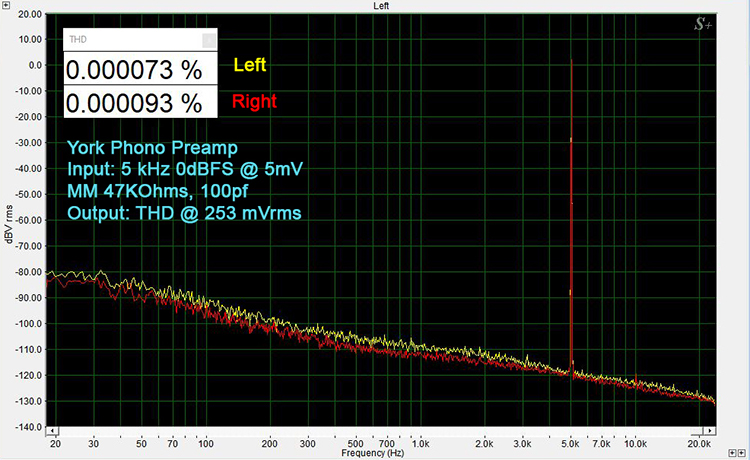
Here are the THD results at 5kHz with an input of 5mVRMS. The output is 253mVRMS. Compared to the last figure the frequency is up by 2.5X and the voltage has dropped by about 2. We are getting close to the number needed for direct velocity to voltage compensation again.
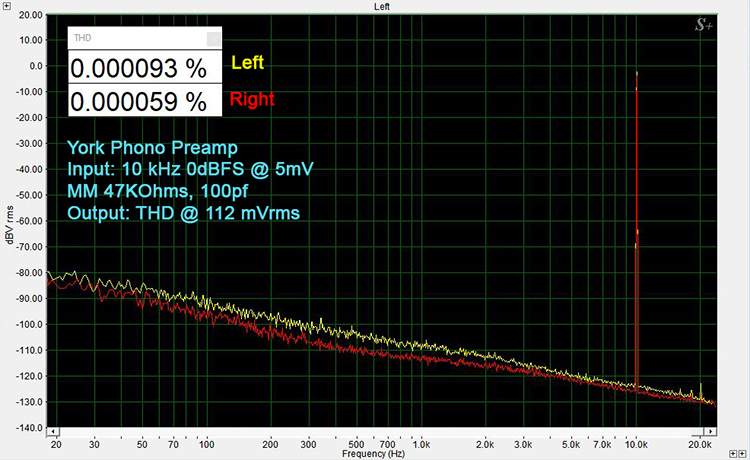
Here are the THD results at 10kHz with an input of 5mVRMS. The output is 112mVRMS. You can see that the voltage has dropped slightly more than the factor of two with a frequency increase of 2X in the York.
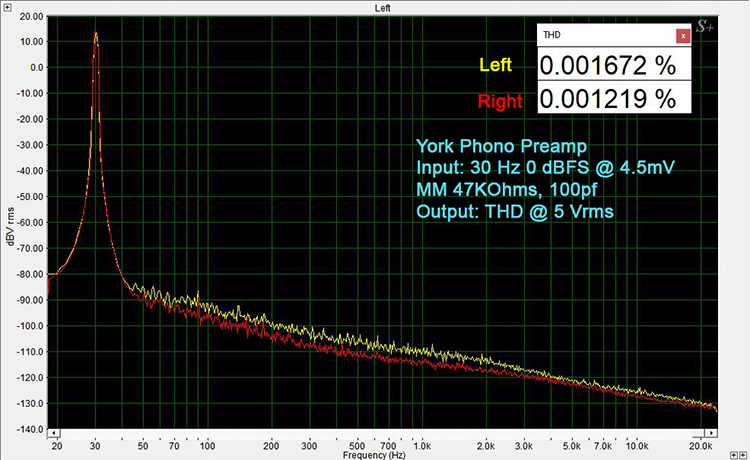
These are the THD results at 30Hz with an input of 4mVRMS. You may wonder why we started at 100Hz and not a lower frequency. For 30Hz we took the output to about as far as we could go before clipping which was 5.5VRMS. This required the input to drop from 5mVRMS to 4.5mVRMS. At 30Hz with 5mVRMS in the RIAA curve wanted to push the level up more than the York could supply.
Clipping appeared constant at 5.5VRMS 20Hz – 20kHz. Referenced to the 1kHz output of 600mVRMS with 5mVRMS into the preamp the overdrive is 9.2 (19dB).
So far it has been smooth sailing for the York in our tests but the low clipping at 5.5VRMS is less than we expected. This is a result of the small DC voltage from the wall wart which is doubled and made a bipolar DC supply with a little IC in the York box. York tells us they are considering a redesign with a larger voltage output Wall Wart which will increase the supply rails on the opamp which in turn will increase the clipping level.
One thing we are not testing yet is the interaction between the cartridge model, the capacitive loading, resistive loading, and the input of the phono preamp past the selectable load components. This was first reported in a paper by Tomlinson Holman “New Factors in Phonograph Preamplifier Design”. It is an open access AES download.
While we are not testing for it yet, I typically can see an issue when I review the schematic of a phono stage, but Six Acoustics did not supply one for the York. Most preamps using high gain – wide bandwidth opamps and traditional feedback do not show the problem. Tube and early transistor power amps have significant issues which are discussed in the paper.
David Rich presents several other RIAA design issues in his article in issue 18 of The Audio Critic starting on page 12. Much of this is based on the analysis of company-supplied schematics.
AudioXpress has just published a two-issue DIY article of a phono preamp design (February and March 2021 issues). Carlo refers to it as a design for the “Objectavist’s room.”

This is the SNR measurement through the MM input. The spectra above show what happens when we A-weight the noise, which reduces low frequencies, so hum does not dominate the SNR. Here you can see it has flattened out the rise in noise from the RIAA, seen on all earlier spectra, at low frequencies.
We did this SNR measurement with an RCA shorting plug which results in an optimistic SNR of 81dB. The York likely is doing about 70dB (real-world) with a cartridge attached. Without a schematic to reference or a test with a cartridge simulator, it’s difficult to be more precise. In any event that result is quite good as the real-world maximum SNR for any MM phono stage is 70.8dB. See Technical Sidebar after the end of the review.
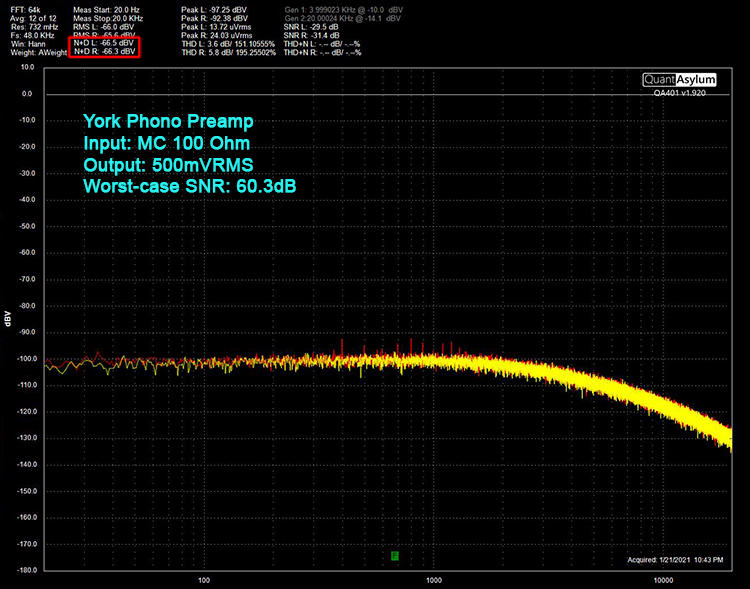
This is the SNR measurement through the MC input. For moving coils, a short is all that is needed at the phono input since an MC cartridge has a low impedance. The SNR in the moving coil position is -66.3dBV or 484uvRMS (again marked at the top of the spectra) which yields a 60.3dB SNR with a 500mVRMS reference output level.
While this 20dB difference in MM to MC SNR is seen in other comparably priced phono preamps too (including much of the York’s competition) we like to point out that it technically doesn’t need to be so. The MC SNR performance in all of them could be better. Again, refer to the Technical Sidebar after the end of the review.
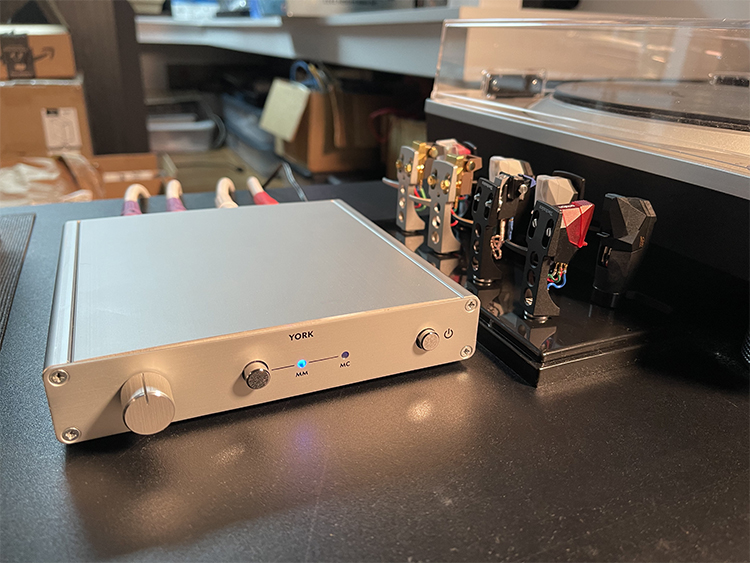
The Six Acoustic York phono preamp is a simple, flexible, and high-quality audio component that helps your records sound their best without spending crazy amounts of money.
- Compact size
- Great sound quality
- Gain fine-tuning
- Plenty of loading options.
- Better grounding lug.
- Bigger power supply to extend the headroom before clipping.
As a small company’s first consumer audio product to market, I think that Six Acoustic has a solid hit on its hands with the little York phono preamp. Its compact size doesn’t mean you have to settle for limited performance or a lack of features. The loading options are comprehensive, and the addition of a gain fine-tuning knob is something I’d like to see on more phono preamps these days. The York’s sound quality with both MM and MC cartridges is extremely good and, combined with its flexibility, I’m left with little to complain about for a phono preamp in this price bracket. Yes, the grounding lug is a little fiddly and I would like to see a little more headroom before clipping but beyond that, this is a simple, honest, and effective piece of engineering that does its job without fuss. It’s completely unpretentious and I like that. While it isn’t an absolute giant-slayer, it is more than competitive with other phono preamps in its price range. And it’s certainly more than a few steps above most onboard solutions that you would find on receivers and integrated amps. I know that Six Acoustic has a Class D power amplifier that is currently in development, but I would love to see them do a higher-end phono preamp in the future. Possibly building off the basic concept of the York but adding things like balanced outputs, a subsonic filter, and a robust linear power supply. Substantial upgrades for vinyl lovers looking for a future step-up component. Dreams and wish lists aside, however, the Six Acoustic York phono preamp is an excellent piece of kit that helps your records sound their best for not a whole lot of money. What’s not to like about that!
The author would like to thank David A. Rich for his valuable assistance.
By David A. Rich
A phono cartridge is not like other components which have a 50 Ohm – 200 Ohm output impedance which is basically a protection resistor. Everybody has connected a pair of line-level outputs together when we thought one was an input. The line-out protection resistor saved you.
The phono cartridge can be modeled as a 500 mH inductor in series with a 1 kOhm resistor, the combination is used in parallel with a 125-pf capacitor to create a cartridge simulator per CTA-490-A R-2018 (its free for download from CTA) which is a 2020 reprint of the IHF test standard from the 1960s. Strange this old standard reappeared just as the FTC about to review the 1974 Power Amplifier Rule.
Why build and use a cartridge simulator and not just a real phono cartridge? It’s even harder to get the hum under control with a cartridge versus a simulator circuit properly built in a shielded box. OK, that is why we use a simulator but why are we worrying about a load for noise tests?
Secrets Sponsor
The answer is noise is a power measurement. It has a voltage and current component. When we short the input, we remove the current noise component. The phono cartridge model restores it. Since current noise flows in the cartridge, the result of that is noise across its output.
All bipolar transistors need current to operate and thus have current noise. That is true of opamps with bipolar inputs. FET opamps have higher voltage noise than bipolar opamps but no current noise outside the reverse-biased diode static protection devices.
Since we have not wired up our phono cartridge simulator our SNR is higher than the real number. The A-weighted noise in the worst-case channel is -87dBV or 44.7uVRMS (marked on the top of the spectra). For a 500mVRMS reference output level, this yields an SNR of 81dB.
A recent analysis using advanced circuit simulation CAD tools and a custom spreadsheet shows the best moving magnet SNR you can get, using more than just an opamp, with the cartridge attached is 70.8dB, and that is with every low noise trick in the electronics applied. For comparison, the old, low-cost, NE5534A opamp, drops to 68.8dB.
Moving coil SNR can be much higher since its model is a small resistor that generates little noise.


